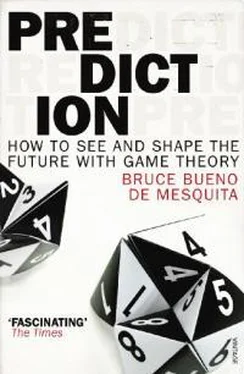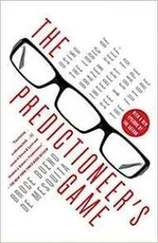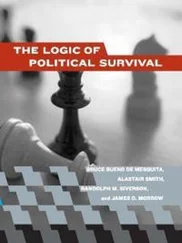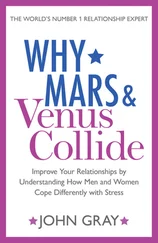The eventual result of all of this competition was just what the game set up at Worms predicts. The Church worked to keep income high within the ecclesiastic domain and low elsewhere. Kings worked to achieve the opposite, seeking control over courts and taxes wherever and whenever possible. Eventually, secular wealth became so great that, as the game implies, kings stopped caring who the bishops were. Kings no longer felt a need to keep the pope happy, and the dominance of the Catholic Church was replaced by the dominance of sovereign states in a secular world.

Now that we have seen how we could peer ahead to the big picture five hundred and more years after 1122, let’s do the same for our own time. Let’s take a look at the inconvenient truth that won Al Gore the Nobel Peace Prize.
The world seems to be undergoing significant warming. The rise in temperature is melting ice in the North Atlantic and elsewhere, raising ocean levels and threatening to sink low-lying island nations and mainland coastal areas. The gathering of more ferocious storms promises years of destructive forces from wind and rain. Higher temperatures will push some temperate climates into the subtropical zone and some subtropical environments into the great stifling heat of the tropics.
First, let me provide a little background on the issue of global warming. After years of debate, including warnings in the 1960s and 1970s of an approaching new ice age, there now seems to be broad agreement within the scientific community that the earth’s temperature is on the rise. How much of the rise is due to human activity and how much to a normal cycle in earth’s climate is less easily agreed on, mostly because the cycle seems much longer than available weather data. We know, for example, that the High Middle Ages (what we used to call the Dark Ages) were a warm period accompanied by rapid economic growth. We know things got colder, at least in Europe, roughly from the Renaissance until probably sometime in the nineteenth century. And we know things are getting warmer again. We also know the increase in temperature is larger than seems to have been true at any time over the past thousand or so years. 3Of course, in the earth’s history a thousand years is a short time, though on the human clock it is pretty long. Scientists seem to concur that the extra rise in temperature is associated with industrialization and modern chemical-fertilizer farming, and that fossil fuel use is among the big culprits. Obviously, concern about global warming is strong enough that there are ongoing international efforts to bring it under control and even reverse it.
What can game theory tell us about efforts like Kyoto, Bali, and Copenhagen—that is, international conferences to regulate greenhouse gas emissions—to find solutions to the real threat of global warming? What can we learn that will help us carve out a better future for our species and our environment in the centuries to come? Frankly, we will see that agreements like the Kyoto Protocol and the efforts at Bali or Copenhagen to reduce greenhouse emissions, especially carbon dioxide emissions, are not likely to matter. They may even be impediments to real solutions. That is not to say that there is not good hope for the future. There is, because global warming produces its own solutions.
Back in December 1997, 175 countries—not including the United States—signed the Kyoto Protocol. The Kyoto signatories agreed to a benchmark year, 1990, against which to establish targets for greenhouse gas reductions. Greenhouse gas emissions had been rising dramatically in the years between the benchmark and the agreement. The protocols call for a 5.2 percent reduction in greenhouse gas emissions relative to their levels in 1990. That is about equivalent to saying there should be nearly a 30 percent reduction when compared to the then expected emissions levels in 2010. Some signatories were called upon to make much greater sacrifices than others. For instance, the European Union agreed to reduce its emissions by 8 percent. The United States was asked to reduce its greenhouse gases by 7 percent, Japan by 6 percent, and so forth. A few countries, such as Australia, were given permission to increase their emissions. No restrictions were imposed on developing countries like India and China (or Russia, assigned a 0 percent reduction), although they are now among the world’s largest greenhouse gas polluters. The United States declined to sign on because it objected to the exemption given to rapidly growing economies like China’s and India’s.
Kyoto produced a large market in which polluters and nonpolluters could buy and sell “pollution rights.” This market has helped to rationalize decisions at the level of individual firms, but it alone has so far failed to result in the magnitude of reductions envisioned by the Kyoto Protocol. As we will see shortly, enforcing the 1997 agreement has been virtually impossible.
One consequence of the difficulties encountered since 1997 was a meeting in Bali, Indonesia, in December 2007. The Bali meeting had more modest goals than Kyoto. It represents an interim step on the way to a 2009 deadline by which it is hoped there will be a new international agreement in Copenhagen. After considerable resistance, the U.S. representative at Bali agreed to significant concessions at the last minute. This made it possible to set out the Bali Roadmap for future climate control. Now the question is, will these efforts work?
To address the prospects for controlling greenhouse emissions, especially carbon dioxide, let’s start with some data that reflect the views of the big players on global warming. These are the governments and interest groups with the most at stake. In all likelihood, any agreement that can be reached will be settled primarily among these few stakeholders. They include the European Union, the United States—divided between the proportion of American public opinion that favors regulating carbon dioxide and other greenhouse gas emissions and those opposed—China, and India. It also includes other relatively large economies such as Russia’s, Japan’s, Canada’s, and Australia’s, plus the growing economy of Brazil. For good measure, I have also represented environmental nongovernmental organizations (labeled here as NGOs), since they had a significant presence at Bali, and pro-environment and less sympathetic multinational corporations. In each case I have estimated potential influence in negotiations over an agreement to replace the Kyoto Protocol, position (explained in a moment), salience for mandatory emission controls, and the extent to which the stakeholder is committed to finding an agreement (even if it is not the one they favor) or will stick to their guns under political pressure (holding out for the policy they believe in). This last variable, as you know, is new to the new model I have been developing and testing for a few years. This is the model that I promised earlier I would apply to this case, just as I applied it to forecasts about Pakistan and other crises in the previous chapter.
Stakeholder
Influence
Mandatory Emission Controls
Salience
Desire for Agreement
Australia
6
65
50
50
Canada
9
60
50
50
EU
87
95
90
35
Japan
15
45
60
60
Russia
6
40
50
60
USPro
65
70
70
40
USAnti
35
30
50
30
CorpFor
3
95
50
50
CorpAgainst
3
1
75
10
Читать дальше












